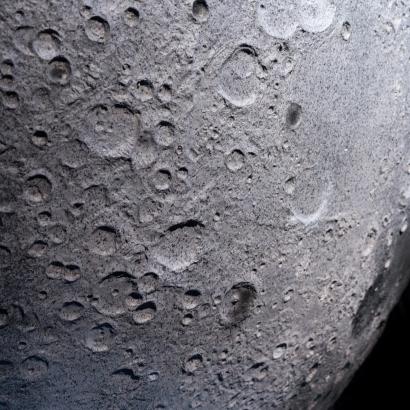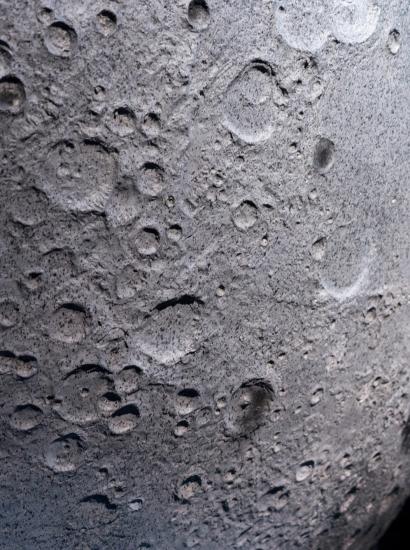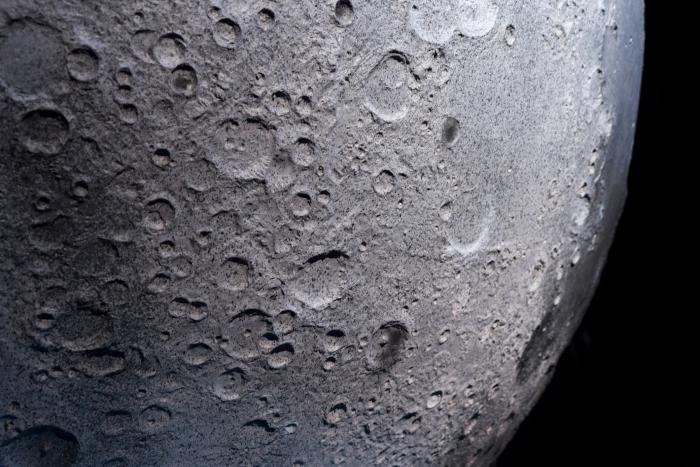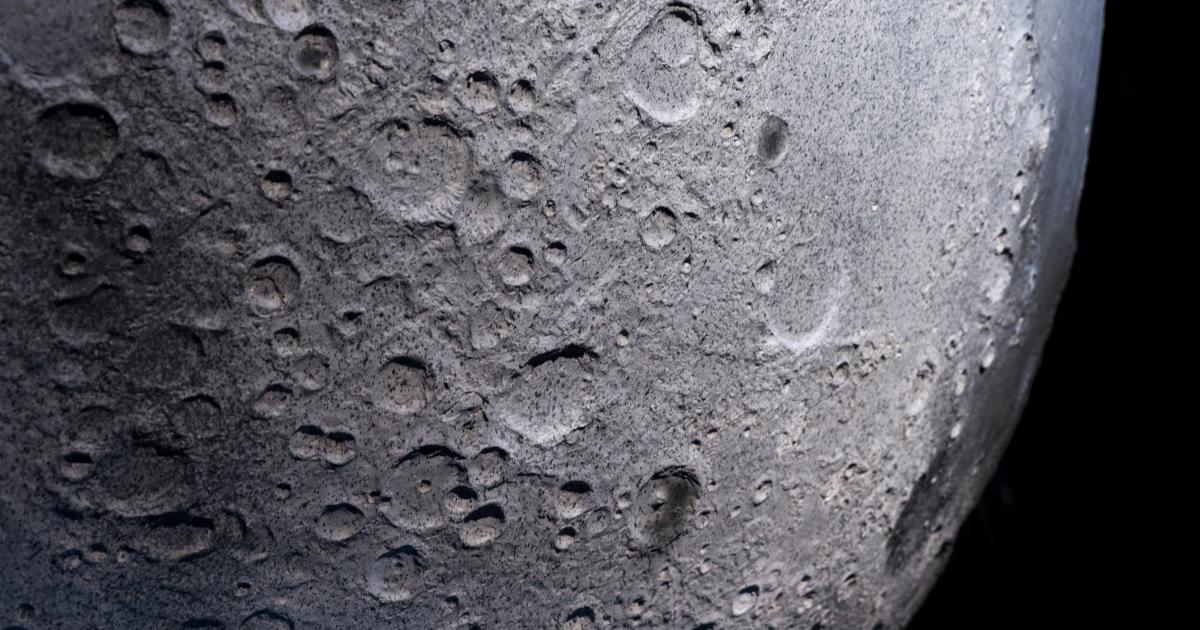- Science & Technology
- China
- Determining America's Role in the World
Dan Berkenstock is a distinguished research fellow at the Hoover Institution. He provides space-related scholarship and policy recommendations through Hoover’s Technology Policy Accelerator. Martin Giles is the executive director of the Technology Policy Accelerator.
Martin Giles: Dan, you’ve been reflecting on the emerging significance of the lunar surface in international relations. What motivated you to explore this topic, particularly the dynamics between the United States and China?
Dan Berkenstock: Back in 1969, my grandmother took a photo of her television set showing Neil Armstrong on the moon, which sits on my desk today. Working at NASA’s Johnson Space Center in college, I met some of the other heroes of that era, including Gene Kranz and John Young. To a young aerospace engineer, the Apollo program was the stuff of legends, a pinnacle achievement in American history. The space shuttle and space station programs have never captured our collective imagination in the same way. But now, three strategically critical trends are converging that should focus attention on the lunar surface: the rise of China as a strategic competitor, the transition of advanced technology development from government labs to the private sector, and humanity’s insatiable appetite for energy and computing.
Of the three, China’s rise is by far the most critical current factor. As an aspiring leader on the international stage, the prestige associated with repeating and surpassing the Apollo landings is squarely within China’s national interest. That gives the United States its first significant national motivation with respect to space policy in half a century.
Martin Giles: Given the technological and environmental challenges of the moon, what do you think could be the primary motivator for nations engaging in lunar exploration? More specifically, why would nations want to have a permanent presence on the moon?
Dan Berkenstock: Beyond national prestige, development of clean and scalable energy is the primary motivator for lunar surface settlement. Although there might be a variety of minerals in the lunar soil, it has been estimated that the moon’s stores of helium-3 could provide the fuel for nuclear fusion that could sustain all of humanity’s energy needs for thousands of years. This opportunity represents the first possible viable model for economic activity beyond Earth’s lower orbits.
Martin Giles: You highlighted the lunar environment’s distinctive features compared to traditional domains of geopolitical rivalry. What are some of these key differences?
Dan Berkenstock: Since the end of World War II, US military supremacy has extended to just about every domain on Earth. That supremacy has helped to establish and enforce a global commons, including maritime access and trade routes. The lunar surface challenges this established order in two key ways.
First, the legal framework for outer space is much less sophisticated than that on Earth. Although the Outer Space Treaty (OST), which was ratified in the late 1960s, prohibits claims of sovereignty or appropriation of celestial bodies, the treaty lacks enforcement mechanisms and is essentially voluntary. Nothing legally prohibits any other country, including China, from establishing a presence on the lunar surface, withdrawing from the Outer Space Treaty, and claiming portions of the moon, up to and including the entire surface. Doing so could also have significant downstream security effects as the OST also prohibits the placement of nuclear weapons in orbit. A major spacefaring country leaving the treaty would degrade the norms it has provided over the past fifty years at the same time as Earth’s lower orbits are becoming increasingly congested and contested.
Second, unlike any domain on Earth, the United States lacks an ability to project power on the moon. There is no infantry, aircraft, or other mechanism to deter or respond to a conflict originating on the lunar surface. It’s not even entirely clear which branch of the US military would be responsible for such a situation. Is the US Space Force equivalent to the Marine Corps—a multimodal force that can fight in the outer space equivalents of land, sea, and air? Or is the Space Force a coordinating organization that would direct other components of the joint force?
Martin Giles: China has shown extensive ambition in space, particularly with its lunar program. How does its approach differ from that of the US?
Dan Berkenstock: China has integrated its lunar ambitions into a broader national strategy, seeing it as a means to gain prestige and demonstrate technological advancement. Comparatively, the US has experienced a fragmented approach post-Apollo, with ambitions often severely limited by budgetary constraints. Both countries have sought international cooperation, the US through the Artemis Accords and China through the International Lunar Research Station Initiative. However, since the 2011 so-called Wolf amendment was added to its annual appropriations bill, NASA and the White House Office of Science and Technology Policy have effectively been prohibited from using federal funds to engage in bilateral cooperation in space with Chinese civil and commercial organizations. This has very much contributed to China continuing to pursue its own mission design and development approach, outside of US input or cooperation.
Martin Giles: Do you foresee scenarios that could lead to conflict over lunar resources?
Dan Berkenstock: Reasonably, most Americans don’t have a clear picture of the actual usable surface area of the moon. Although the total lunar surface is about one-fourteenth that of the Earth, when various aspects (such as slope, lighting, and temperature fluctuations) are taken into account, the “inhabitable” portion of the lunar surface is approximately 75 percent of the surface area of the United States. Within that, there appears to be a relatively small set of “preferred” real estate. On one hand, the Outer Space Treaty states “outer space is not subject to national appropriation.” However, the 2015 US Commercial Space Launch Competitiveness Act includes language that “A US citizen engaged in commercial recovery of . . . a space resource shall be entitled to any . . . space resource obtained, including to possess, own, transport, use, and sell it according to applicable law, including US international obligations.”
So, does this mean that a US entity does own the resources they might extract from the moon in the sense that they can return those resources to Earth to sell them commercially, but neither they nor the US government can own or exert claims of sovereignty on the territory from which those resources are derived? I’m not a legal expert, but it’s hard for me to see how this doesn’t eventually lead to conflict—regardless of the scope and intensity of that conflict.
If resources such as helium-3 do turn out to be highly valuable, or if the concentrations of those resources turn out to be highly variable, there will inevitably be contention for the best locations. Conflict could be as simple as disagreement while working through these issues via diplomacy at the United Nations. It could mean interference and degradation of robotic equipment on the lunar surface. It could mean armed conflict. This uncertainty is one of the aspects that make studying the lunar surface fascinating.
Martin Giles: How could the US deter China from taking an aggressive stance on claiming rights on the moon?
Dan Berkenstock: At this point, I think we are still in the realm of influence versus classic deterrence. I don’t fundamentally believe that conflict on the lunar surface is in any nation’s interest. Outer space will remain a dangerous, extreme, and distant environment for human activity for the foreseeable future.
I believe there is an additional perception around the sanctity of human life in orbit that we don’t always treat with the same sensitivities here on Earth. America rightly takes pride in never having lost an astronaut in orbit. At this point, establishing clear norms and a win-win approach to the lunar surface is in the national interests of both the United States and China. I don’t believe history would judge either nation well for being the first to initiate any level of conflict on the lunar surface.
As the saying goes, “possession is nine-tenths of the law.” Today, there is no possession, or even presence, on the moon. There is certainly a path forward where many countries are able to use substantial portions of the lunar surface for habitation, scientific research, and economic gain. However, the norms and treaties related to these activities are weak. Dialogue, with real political backing, is probably the best mechanism for influencing behavior today, especially as the Outer Space Treaty was created for a different era. In fact, there was another treaty drafted by the United Nations called the Moon Agreement, back in 1979, that sought to clarify some of the issues we’re discussing today. Unfortunately, it wasn’t signed or ratified by the major space powers. Re-examining its relevance in our current era of space exploration could be one place to start.
We also shouldn’t underestimate the effect of signaling and the coupling of activities in orbits closer to Earth with the lunar surface. The last decade has seen the creation of the United States Space Force and the introduction of terms such as space as “a warfighting domain” into common usage by US officials. The US Space Force’s “Space Threat Fact Sheet” lays out many of the reasons why this evolution in language simply reflects the reality that other countries’ space activities have created. However, it’s also easy to envision a future where an increasing use of militaristic language continues to further erode traditional norms and concepts around the use of space for peaceful purposes.
Given its long history in space, this is an area where the United States has a significant opportunity for leadership on the world stage.
Martin Giles: Lastly, as we stand on the brink of a new space race, what actions do you believe the US must take to ensure it doesn’t fall behind?
Dan Berkenstock: Personally, I believe the US has an extraordinary near-term opportunity with respect to the lunar surface. Although we’ve had a continuous presence in orbit for twenty-five years on the International Space Station, most Americans still can’t articulate a clear motivation for our activities in space.
“We’re pursuing 1,000+ years of clean energy,” would be a clear goal. Now, there are many caveats to the potential literal truth of that statement. However, there are clear national interests that we could articulate and pursue. That would require a level of focus and all-of-government coordination that is often elusive within our system.
For instance, what is the relative value of building an economically viable habitation on the lunar surface versus landing a human on Mars? If the goal in space is developing clean power sources of the future, it’s the former. If the goal is pushing exploration to the limit, it’s the latter. Once the goals are clarified, we have a tremendous opportunity to leverage billions of dollars in private capital and the knowledge base of a generation of engineers and entrepreneurs who have been practicing for this moment.
President John F. Kennedy laid down a similar, and clearly stated, challenge in 1962. We need that equivalent in 2025. Then we need to back it up with regulatory, budgetary, and diplomatic support that aligns our civil, military, and private sectors toward that goal. Doing so could solve some of the greatest challenges of our time. Failing to do so could lead to a new and dangerous conflict zone. From my point of view, we have a relatively narrow window to decide our course.

















